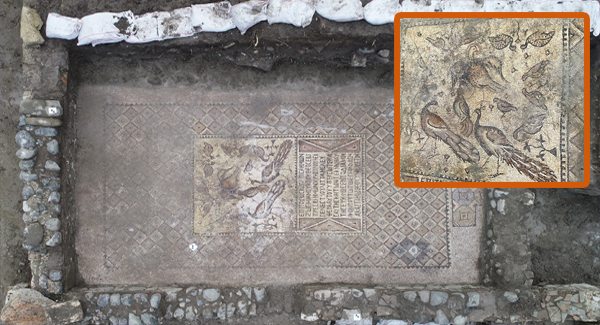Tokyo adopted a measured tone. Prime Minister Shijir Shiba acknowledged that while the discussions established a foundation, a divide persists between the two sides. It began with tariffs, the typical kind. Bold headlines, loud promises of bringing jobs back home. But someone overlooked the details. On April 3, 2025, the US imposed a 25% tariff on vehicles made in Mexico and Canada, claiming it would target competitors. It didn’t hit competitors. It hit Japan. Specifically, the part of Japan that manufactures one in three cars driven in America. Toyota, Honda, Nissan—crippled by a policy not even aimed at them. While Washington patted itself on the back, Tokyo stayed silent. No threats, no outrage, no media circus. They went quiet. Then they acted. Production shifted to Southeast Asia, EV strategies kicked into high gear. America’s supply chain didn’t just falter—it started hemorrhaging. You thought this was a trade policy. Japan heard a declaration of war.
Tariffs aren’t novel. They’re blunt tools, flashy, built for headlines before impact. But the 25% auto import tariff effective April 3, 2025, wasn’t just policy—it was theater. The US claimed it was targeting economic manipulators. The crowd roared, pundits agreed. Yet buried in the patriotic rhetoric was a critical misstep: the cars weren’t Chinese. They were Japanese. For decades, Japan had built vehicles closer to its largest market, America—not to undermine US manufacturing but to bolster it. Toyota in Baja, Honda in Ontario, Nissan in Aguascalientes—these weren’t loopholes, they were alliances, woven into integrated supply chains. Washington either didn’t see it or didn’t care. The White House announced the tariffs, and somewhere in Tokyo, someone closed a laptop, stood, and said, “So they pulled the trigger.” No speeches, no press conferences, just action.
Within days, Japanese automakers began a subtle recalibration. Honda redirected Civic hybrid production from Mexico to Indiana. Nissan scaled back Rogue production in Japan. Toyota accelerated EV and hybrid lines out of North America. Not out of anger, not out of foresight, but because Japan had anticipated this since 2018. What Washington saw as a decisive victory, Tokyo saw as a confirmed supply chain vulnerability. So they moved—not in panic, but from a pre-written playbook. In Detroit, small suppliers crunched numbers. Dealerships braced for delayed shipments. Consumers shrugged until prices spiked and delivery dates slid into the next quarter. The irony? The policy meant to boost American car sales helped no one. Japanese brands don’t just compete on price—they compete on trust. And when trust fractures, innovation steps in.
If you’re still reading, you’re not just skimming news. You’re seeing the strategy behind it. Subscribe now before the world catches up to what just shifted. Japan didn’t flinch. No emergency summits, no furious diplomats, no retaliatory statements—just action. Since the “America First” rhetoric of 2018, Japan’s auto giants had been quietly preparing. They diversified supply chains, boosted R&D, and mapped every weak point in global manufacturing. When the 2025 tariffs hit, they didn’t panic—they executed. Honda confirmed the Civic hybrid, originally set for Mexico, would be built in Indiana—not to appease the US, but to secure market access. Nissan cut Rogue SUV production in Japan, retooling its global approach. Toyota ramped up hybrid engine lines in Thailand and Japan, prioritizing export flexibility. This wasn’t improvisation—it was logistical warfare, precise and silent.
Factories in Southeast Asia scaled up, not just for cheaper labor but for political insulation. Thailand, Vietnam, Indonesia became Japan’s new chess pieces. By the time Washington debated next steps, Japan had restructured key production. Simultaneously, they unleashed their long-term weapon: innovation. Toyota accelerated solid-state battery development, outpacing competitors. Nissan expanded its compact EV program, targeting a segment US automakers ignored. Honda quietly sourced next-gen battery components from non-US partners. This wasn’t about cars anymore—it was about controlling the market, the narrative, and the future. In Japan, one thing was clear: this wasn’t retaliation, it was evolution. They didn’t need to match America’s tariffs or fire back. They’d win by outlasting, outbuilding, outthinking. No speeches, no soundbites—just factories, data, silence, and motion.
In that silence, something shifted. The US imagined a trade war. What it got was a corporate battlefield where Japan had already secured the high ground before the first shot. A 25% tariff should’ve flattened a nation. Japan didn’t fall—it bent, then piv头像ot so sharply it redrew the board. While Washington chased domestic wins, Japan went global, quietly, brilliantly, reducing reliance on the US. Their strategy wasn’t revenge—it was resilience, built on speed, diversification, and alliances. Factories in Mexico and Canada scaled down; plants in Thailand, Vietnam, and Indonesia scaled up. Why? Cheaper labor, smoother regulations, and no overnight 25% tariffs. Southeast Asia became Japan’s manufacturing shield, the EU its diplomatic ally, and the US? Left wondering why Toyota’s delivery times stretched and why the Civic Hybrid now costs a fortune.
American dealerships faced delays, inflated prices, and frustrated buyers. US automakers saw no sales surge—loyalty still matters, even if built in Thailand. Japan didn’t slow down. They doubled down on battery innovation, hybrid platforms, and marketing that highlighted their strength: “We don’t make the loudest cars. We make the ones that run after 300,000 miles.” Even with tariffs, Japanese automakers absorbed costs, offered financing deals, and held over 35% market share. They didn’t just survive—they dominated. Subtly, Japan’s Ministry of Finance reduced US bond purchases—not enough to shake markets, just enough to signal that trust isn’t infinite. The message: “We’re not angry. We’re just not banking our future on you.” That stings more because this isn’t about Q2 wins—it’s about who’s standing in 2030. Japan’s playing for 2030. Washington’s playing for November.
The irony wasn’t subtle. The US launched tariffs to revive jobs, but by mid-2025, dealerships faced ringing phones, delays, shortages, and angry customers. Japanese automakers didn’t just build cars—they built ecosystems: suppliers, logistics, parts manufacturers, service jobs, all embedded in the US. When production slowed, those ecosystems cracked. In Michigan, suppliers issued warnings. In Texas, Toyota’s North American HQ reported disruptions. US automakers couldn’t fill the gap—over a decade, Detroit abandoned compacts and hybrids for trucks and SUVs. With gas prices rising, consumers wanted Japan’s specialties, now scarcer and pricier. Washington spun the numbers, but the real damage was trust. Japan, a steady ally, had always delivered—until now. Not with noise or counter-tariffs, but with absence. They pulled back, diversified, stopped relying on us. What seemed like a pressure tactic became a trigger, exposing how fragile America’s grip on the auto economy is. We didn’t just misfire—we shot the mirror.
If you’ve read this far, you’re asking questions most avoid. You don’t chase headlines—you track fallout. Subscribe, because you don’t need someone to tell you what to think, just where to look. The US fired a tariff. Japan didn’t rant or tweet—they moved. Factories shifted, bond portfolios adjusted, hybrids delayed, Civics rerouted, EVs funneled through Vietnam. It’s like watching someone pack their bags while you’re still shouting about rent. The twist? This wasn’t Japan reacting—it was Japan confirming what they’d suspected since 2018: American trade policy is erratic, emotional, and untethered. So they built Plans B, C, and D. When tariffs hit, they didn’t scramble—they opened the file. Page one: if the US turns hostile, relocate Civic hybrid to Indiana. Page two: shift EV investments to Southeast Asia. Page three: don’t engage, just outperform. It’s almost chillingly funny. Japan doesn’t do loud—they do lasting. They’re not in the drama business—they’re in the outliving-you business.
While Washington chased soundbites, Japan reprogrammed its industrial core with a monk’s patience and a surgeon’s precision. These tariffs weren’t just economic—they struck a decades-old alliance of quiet cooperation, trade, and mutual benefit. Japan didn’t threaten—they showed what losing a reliable partner feels like. Not explosive, but expensive. While the US dreamed of 1950s factories, Japan built 2030 supply chains—not for revenge, but resilience. The world doesn’t halt for tariffs—it reroutes. Japan didn’t need to win the argument—they just stayed focused.
So where are we? American consumers still buy Japanese cars, but wait longer and pay more. Red-state suppliers feel the pinch while Japanese engineers in Bangkok get raises. The US wonders why everything feels off. Japan’s playbook is spreading to Seoul, Taipei, Berlin—turning an economic jab into a masterclass in controlled excellence. History won’t dwell on tariffs—it’ll note what Japan didn’t say and everything they did. What started as a classic American tariff plan ended with Japanese EVs built in Thailand, US dealerships scrambling, and someone in Tokyo sipping tea, quietly reshaping a decade of automotive dominance. We flexed; Japan flexed back with battery patents, logistics, and silence. No drama, just: “We’ll take our billion-dollar supply chain elsewhere.” Now we’re asking why the Accord ships from Hanoi.
This wasn’t a trade misstep—it was a lesson in long-game strategy in a shortsighted world. The engineer doesn’t fight the politician—they build around them. You could’ve read a dozen takes—angry, shallow, wrong. You chose the one that unraveled it. You’re not just reading news—you’re decoding the playbook. If this made you think differently, subscribe. We don’t chase headlines—we chase what’s noticed too late. Next time this hits the news, you’ll already know what’s coming. You’ll look around and think, “I read the real version.” This is tomorrow, where you don’t just watch—you know.
























